August jobs report: Worst manufacturing month since Great Recession, unemployment falls due to workforce dropout
The August BLS jobs report shows Illinois is down 8,000 manufacturing jobs on the year, giving the state the worst manufacturing job losses in the region, and a summer workforce contraction totaling 100,000 people.
Illinois’ August jobs report, released Sept. 20 by the federal Bureau of Labor Statistics, or BLS, reveals the human cost of Illinois’ anti-growth tax and regulatory policies. When taxes and regulations thwart entrepreneurs and small businesses in Illinois, the pain is felt by unemployed workers who are left jobless or forced to seek work in other states. Illinois is not seeing nearly enough new investments or expansion plans, especially in the manufacturing sector. The result is that hard-working Illinoisans are left with fewer job opportunities and more reasons to leave the state. The August jobs report shows a dramatic loss of manufacturing jobs and continued workforce dropout.
Illinois lost 4,400 manufacturing jobs in the month of August, according to the BLS report. That makes August the worst month for manufacturing job losses since 2009, when Illinois’ job numbers slid during the Great Recession. The state’s unemployment rate fell to 5.5 percent in August from July’s 5.8 percent, but this was due entirely to the fact that 19,000 unemployed Illinoisans dropped out of the workforce. In fact, workforce dropout is the same reason Illinois’ unemployment rate dropped to 5.5 percent in August from 6.6 percent in April. Illinois’ workforce contracted by 100,000 people over the summer.
The majority of Illinois’ economic sectors experienced job losses in August, resulting in a total net job loss of 8,200 across sectors. Losses were steepest in manufacturing (-4,400), financial activities (-2,600), education and health services (-1,900), and construction (-1,700). Sectors that experienced gains included leisure and hospitality (+3,400) and professional and business services (+2,000).
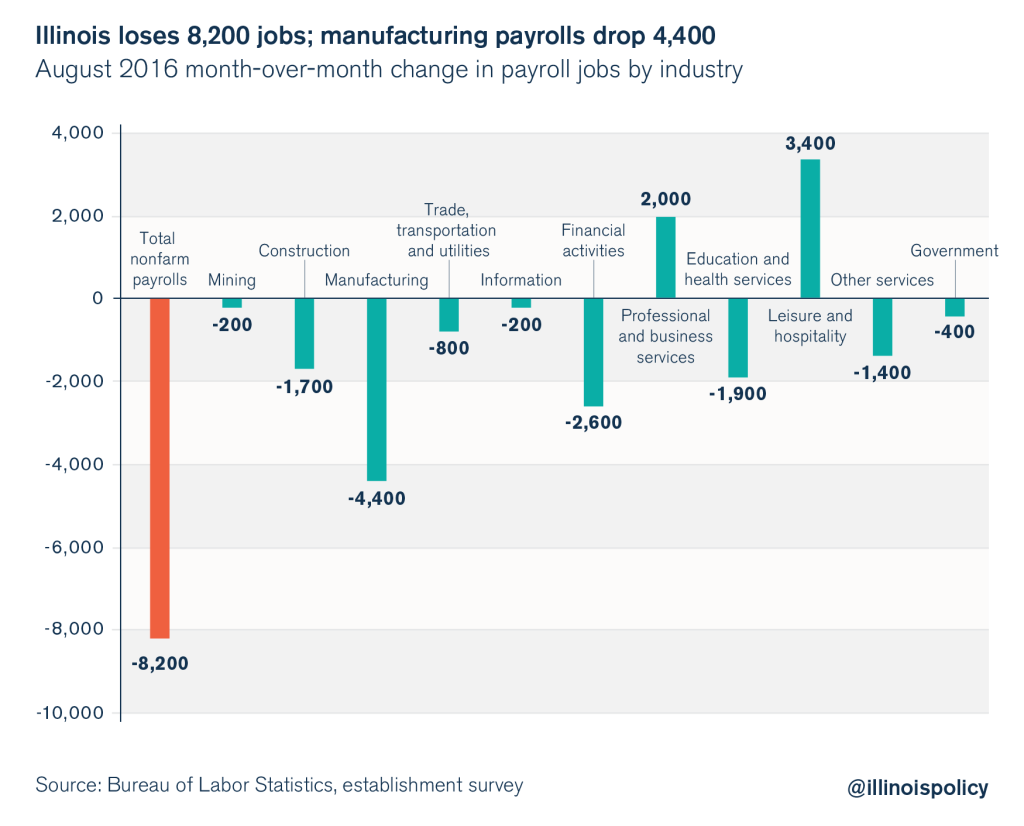
The household portion of the BLS survey revealed another month of significant workforce dropout in August, with the state’s labor force contracting by 22,100 people on the month. Workforce dropout is the only reason Illinois’ unemployment rate dropped to 5.5 percent in August from 5.8 percent in July. Of the people who left the labor force, 19,400 were formerly unemployed, and 2,800 were formerly employed. And workforce dropout alone drove Illinois’ unemployment rate to to 5.5 percent in August from 6.6 percent in April. Over the summer months, Illinois lost 100,000 people from its labor force.
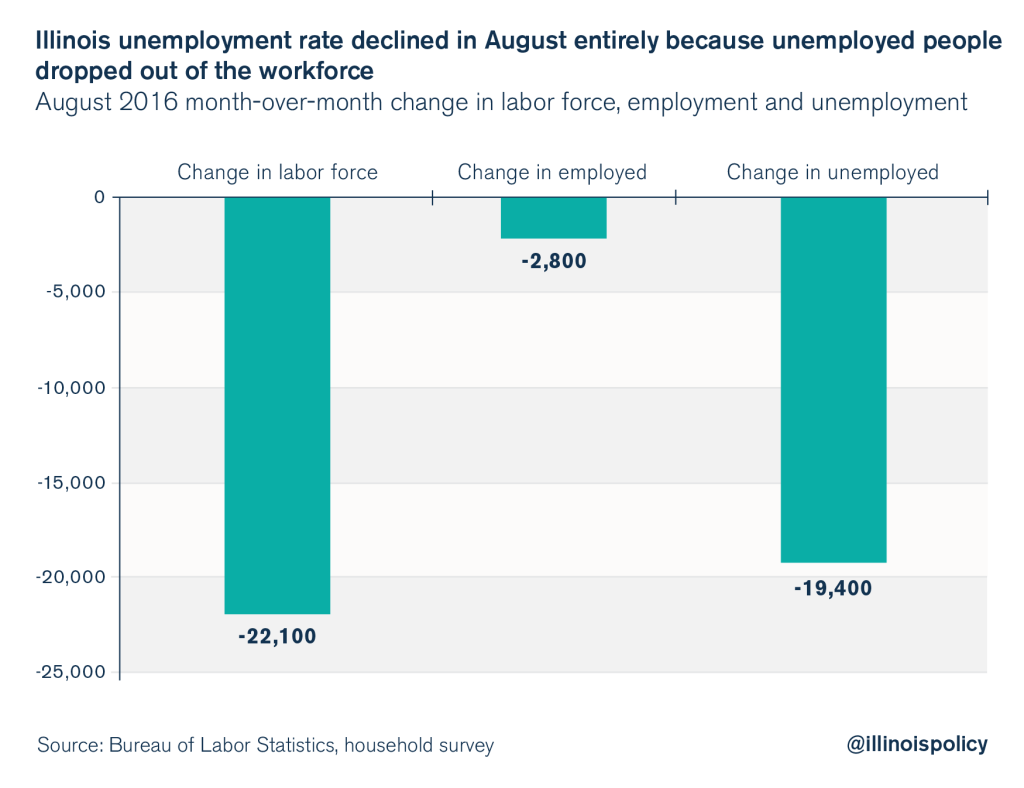
While Illinois’ workforce dropout continued over the summer months, it is also likely related to working-age Illinoisans leaving the state during the summer moving season. Both BLS and IRS data already show that Illinois is losing working-age adults to other states; a shrinking summer workforce is consistent with people relocating during the moving season. Illinois’ workforce contracted by 8,500 in May, 35,300 in June, 33,000 in July and in 22,100 August.
Regional comparisons
The majority of Midwestern and surrounding states are down manufacturing jobs on the year, and Illinois’ loss of 8,000 manufacturing jobs is the worst of all states in the region. The downturn in factory work among these states could be a sign of a broader economic slowdown, given that economic downturns often begin with losses in manufacturing and industrial work.
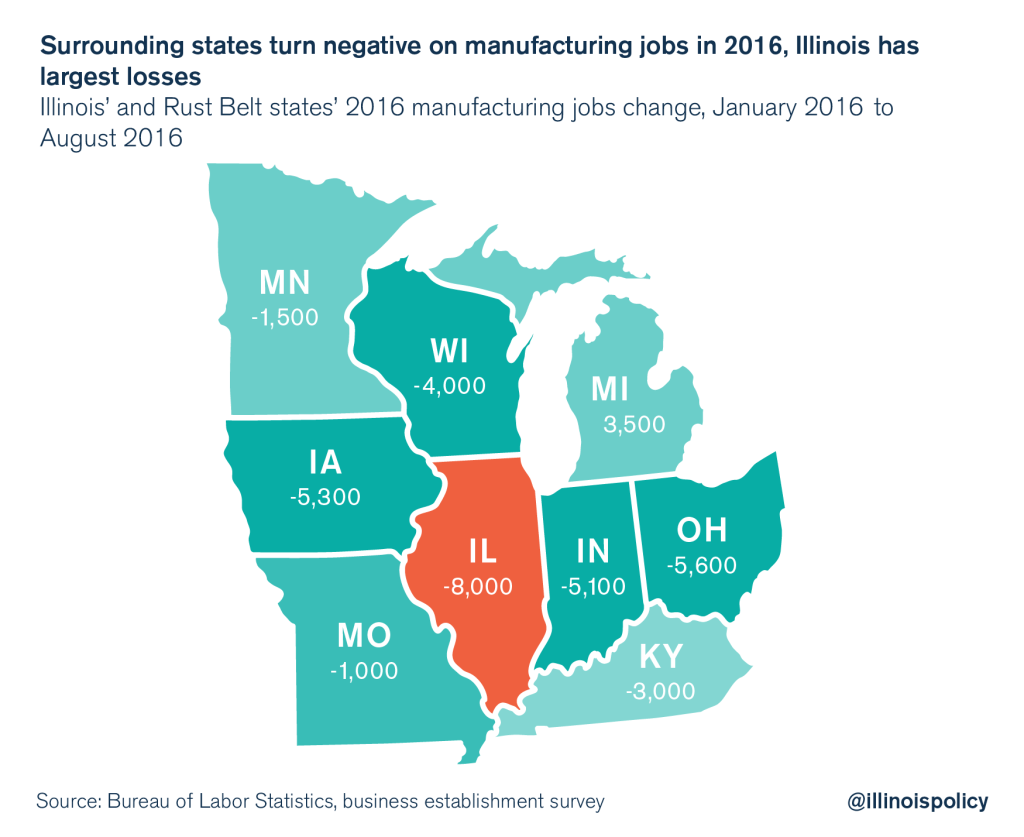
The overall jobs picture also looks weak across Midwestern and surrounding states. Illinois is running slightly worse than middle of the pack among peer states, up by 34,500 jobs for the first eight months of 2016. Taking into account the different sizes of the economies in the region, this puts Illinois behind Missouri, Michigan, Wisconsin, Minnesota and Iowa, but ahead of Ohio, Indiana and Kentucky in 2016.
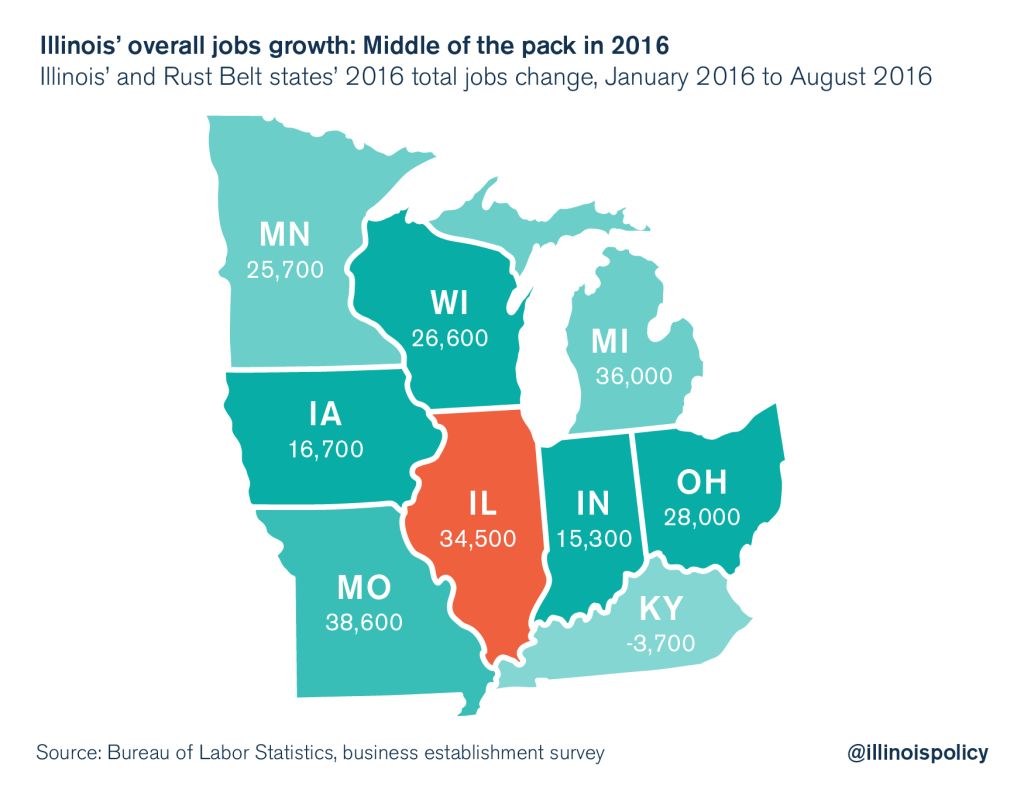
The longer view looks much dimmer for Illinois, especially on the manufacturing jobs front. Illinois has had the worst manufacturing jobs recovery in the region: The Land of Lincoln has seen its manufacturing jobs increase by less than 3 percent since the end of the Great Recession. Meanwhile, the states around Illinois have seen manufacturing jobs growth of between 6 and 38 percent over the same time period.
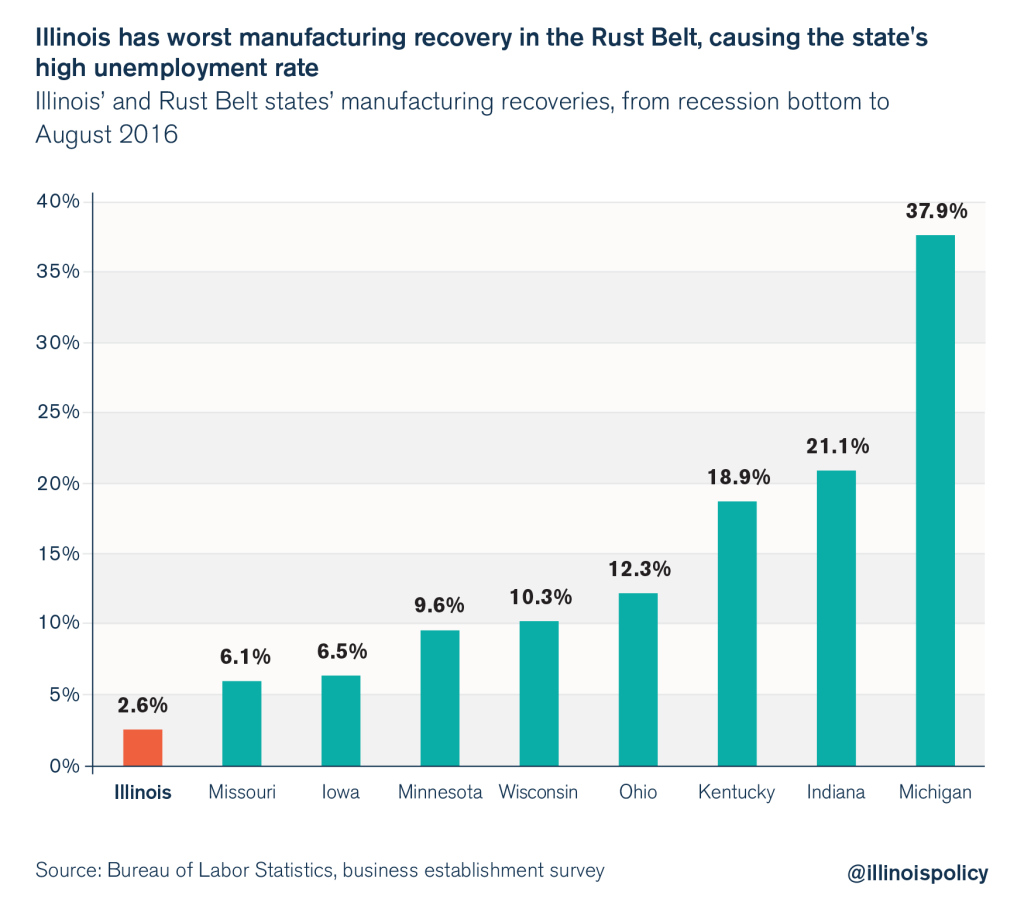
Less than a month before the dismal August jobs report came out, Illinois Manufacturers’ Association CEO Greg Baise laid out the case for how Illinois government is driving business out of Illinois, and the policy changes manufacturers need to see to invest with confidence in Illinois. Baise included the following:
- Spending reform to put Illinois’ fiscal house in order, including state constitutional pension reform
- Tax reform, including lower property taxes, elimination of the estate tax, and the removal of the harmful pyramiding of the sales tax on business inputs
- Comprehensive workers’ compensation reform to bring costs in line with those in surrounding states
- Closing the skills gap with more training programs to create a pipeline of manufacturing talent
Many of the specific solutions Baise proposed fit within the categories of spending reform, structural tax reform, and regulatory reform. This three-pronged policy approach would help cultivate better job creation and economic growth over the next few years and would restore confidence in the state. The last major reform Baise would like to see – an increased focus on industry and trades in Illinois’ education system – would result in a greater supply of skilled workers prepared for an expansion of manufacturing in the state.
It’s time for policy leaders to seriously consider the advice of industrial leaders like Baise. Years of politicians ignoring the perspective of job creators has pushed Illinois workers into the stream of residents fleeing the state.
